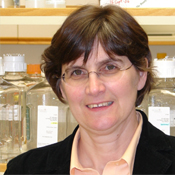Personalized precision medicine approach to understand the many different genetic and epigenetic (environmental) causes of autism
iTARGET Autism is Canada’s first family-centred, genetics-based initiative that fully integrates the research, clinical and patient communities within British Columbia
The overall goal of the personalized precision medicine approach is to identify autism subtypes and find the individualized “best-fit” treatments for each subtype.
This work is ongoing through an exciting $7M project called, “The individualized Treatments for Autism Recovery using Gene-Environment Targets (iTARGET- Autism)”, funded by Genome BC. This is a Canada-wide study, and we are contributing data from about 1,500 individuals with autism, most of whom were recruited through the Provincial Medical Genetics Program at Children’s and Women’s Hospital. Beyond examining brain, behaviour and development alone, iTARGET integrates findings across different “whole-body” systems and across all the different “-omes,” including the phenome, genome, the microbiome, proteome and the metabolome. Characterizing and clustering the highly variable brain and body ‘omes’ of autism into specific subgroups helps to simplify autism’s enormous variability and more easily recognize what causes different ‘autisms’ in different people, not unlike approaches for recognizing the many different subtypes of cancer, epilepsy, hearing loss etc., that tend to be labelled symptomatically rather than by cause.
The iTARGET Initiative is a collaborative study between UBC, Illumina and Autism Speaks in providing whole genome sequencing, as well as analyzing the gut microbiome, blood and urine metabolites, and protein in whole blood. We are working with Connected Displays and Canada’s Michael Smith Genome Sciences Centre in building a CFI-funded database (ASDBase) for storing and mining all available laboratory results and detailed phenotypes of recruited subjects, for clustering distinct autism and related neurodevelopmental subtypes. One of the goals of this study was to determine if a single whole genome sequencing test, analyzed using commercially available software (VarSeq from Golden Helix available in Rajcan-Separovic/Lewis Lab), could more precisely identify autism subtype and treatment pathway, mitigate the need for complementary gene copy number analysis and the need for a bioinformatics WGS analytical team, while optimizing a more accurate and informative diagnosis for the patient.
The current first tier genetic test for individuals with idiopathic autism is the Copy Number Variant (CNV) analysis using Chromosome Microarray (CMA). If uninformative, the costlier second tier testing of whole exome or genome sequencing (WES/WGS) is used to identify smaller single nucleotide variants (SNV) and insertions/deletions (Indels). Within recent months, we have analyzed the first 48 of the 100 genomes for simultaneous sequence and copy number variant detection using the VarSeq software. Not only were 100% of the clinically reported CNVs identified by CMA also identified by WGS, but novel CNVs and SNVs pertinent to the patient’s specific features of autism and medical co-morbidities were also identified.
The iTARGET strategy is now working toward diagnosing different types of autism earlier in life when interventions are most effective, and develop personalized behavioral treatments and medical therapies tailored to the specific type of autism found.
The iTARGET strategy is now working toward diagnosing different types of autism earlier in life when interventions are most effective, and develop personalized behavioral treatments and medical therapies tailored to the specific type of autism found. We are becoming better informed and able to give families more precise, evidence-based guidance to help them navigate treatment decisions, so their children can have the best possible outcomes.
We are confident that analysis of the remaining genomes will further validate the potential of this pilot study and the larger iTARGET project as catalysts for optimizing early autism diagnosis and stratifying more precise and personalized “best-fit” treatments; improving patient outcomes, not only for ASD, but for related neurodevelopmental conditions (intellectual disability, ADHD, anxiety, language-based learning disorders etc.)



